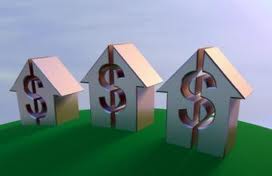
Earlier today the RBA released its credit aggregates, which includes the closely watched housing credit series of data. On a month by month basis, January was an improvement on December but both owner occupiers and investor credit remain within the bounds of the last 12 months, which saw house prices fall:
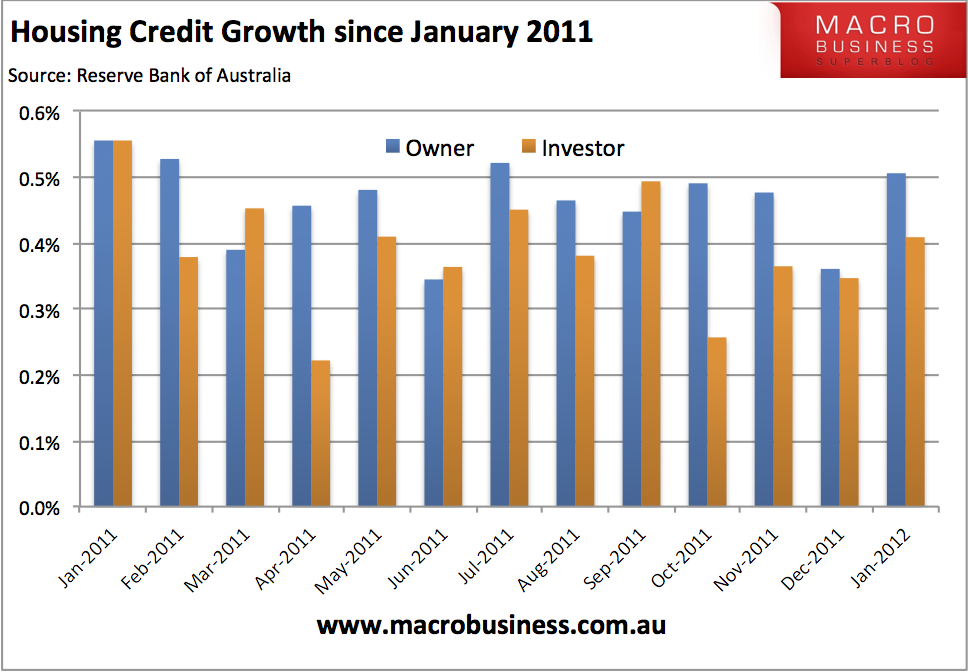
The current year on year aggregate is much below the 2010 trend, which reversed the secular trend, probably due to the combination of historically low interest rates and government stimulus, and is now at a record low:
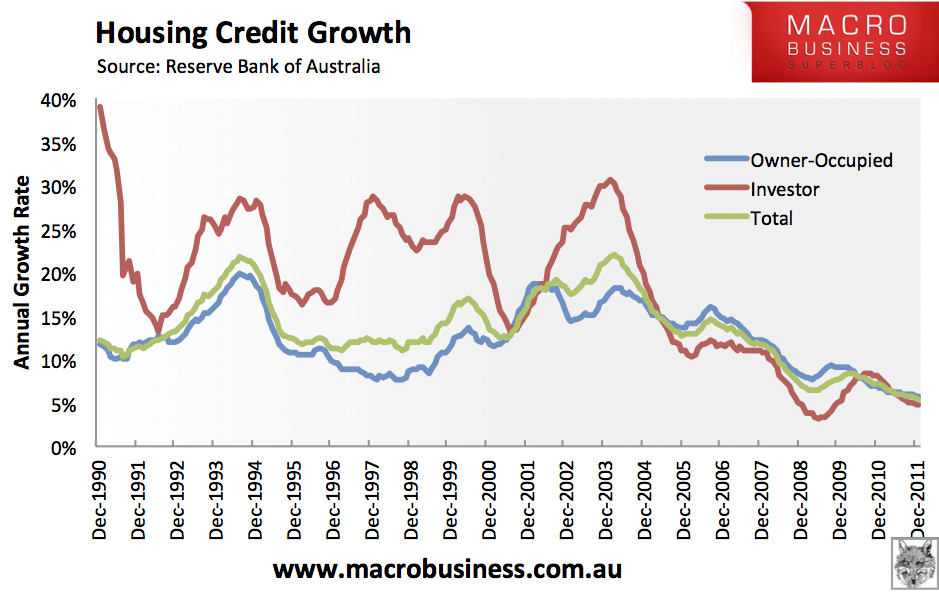
Note in the chart above the standout – investor housing credit which is running at an annualised growth rate of only 4.7%, way off its 20 year average rate of 18% per annum. It seems a resistance level of share of housing debt has been reached, with investor debt (most of which is fixed interest), at 32% of total debt:
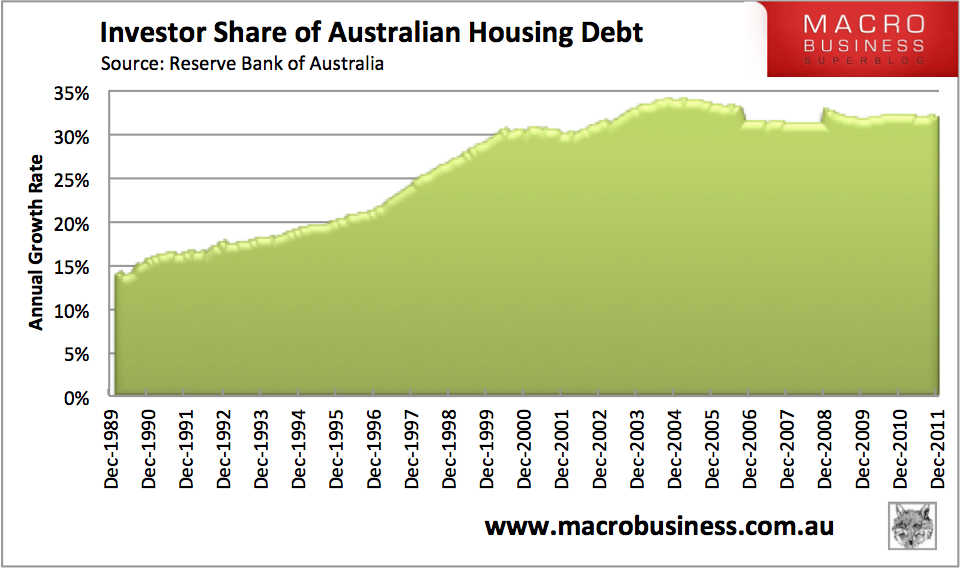
But total debt still exceeds $1.2 trillion (yes thats 1200 billion, with over $250 billion added to private debt since the GFC, more than the total Federal government debt added since May 2008):
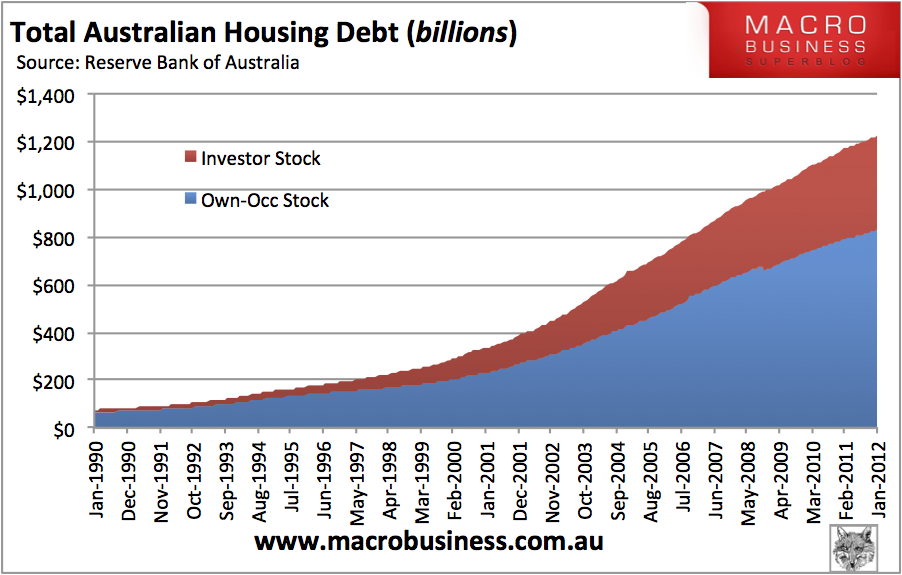
Finally, across all sectors, whilst business credit growth is slowly recovering, after corporate balance sheets were repaired (and impaired due to terminally lower Return on Equity by paying off debt) post-GFC, personal credit is still negative or in outright deleveraging:
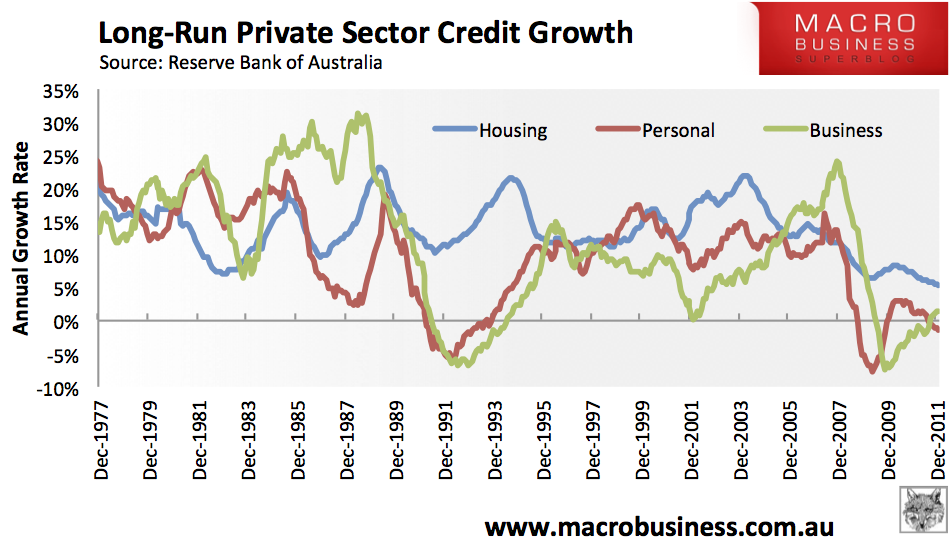
So, with to rate cut behind us, we’ve seen a very muted response in housing credit and a collapse in new home sales. Some effect, a push on existing stock sales. We still look well below the levels of growth needed to generate price growth in houses but we’ll get further confirmation or not of that when we get ABS Housing Finance for January.